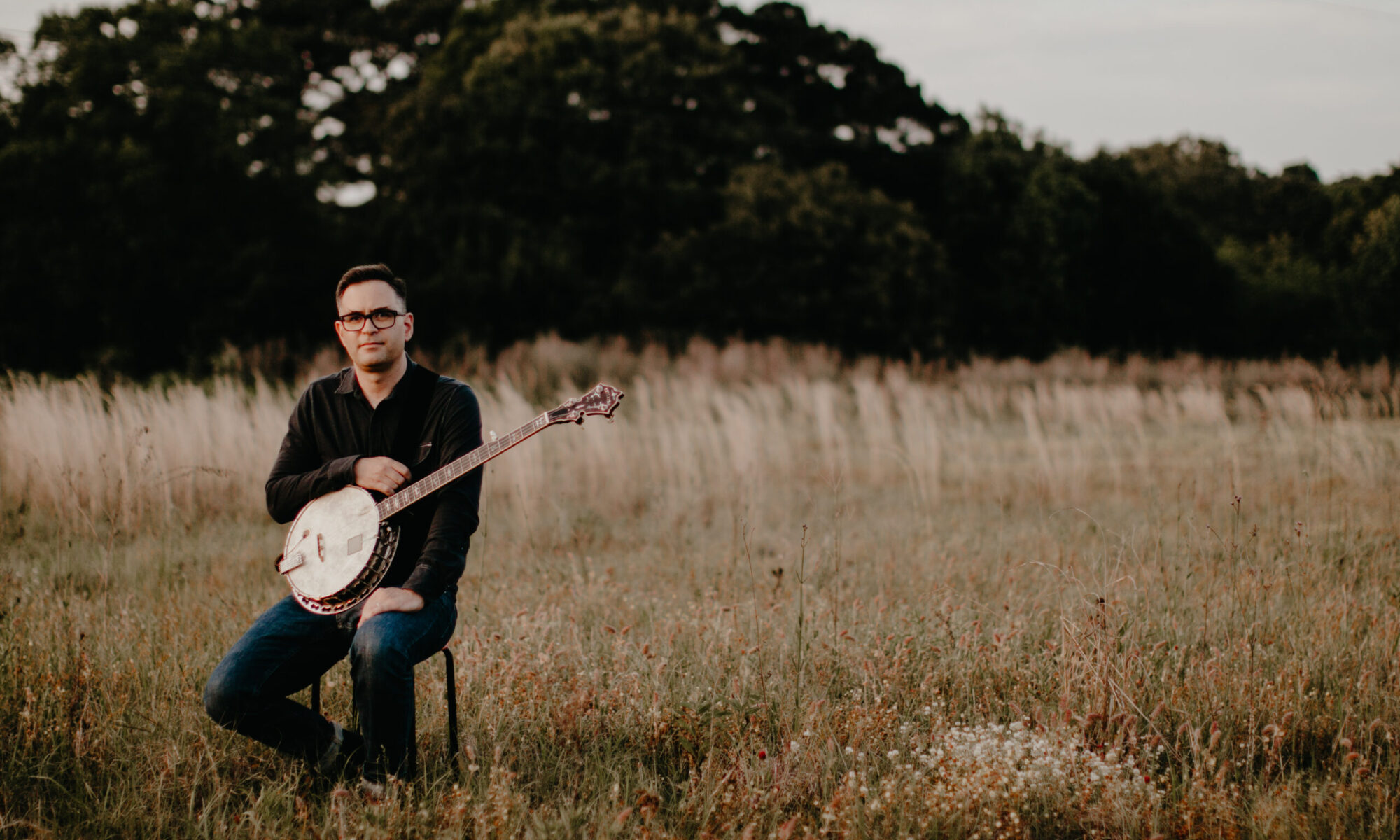I use sensor-equipped banjos when I perform and record with live electronics. Check out my Banjo + Live Electronics playlist on YouTube and my albums Sky Sparrow Snow and Post & Beam to hear the instruments in action. My current banjos are each outfitted with a contact microphone, an infrared distance sensor, 2 pressure sensors, and 3 light sensors.

This is my fretless, tack head banjo built by Eric Prust. My other extended banjo is a Stelling Staghorn.
Sensor Details

The contact mic can be seen on the bottom of the head just below the bridge.
A square pressure sensor is located at about 12:30 on the banjo head.
The distance sensor, visible just to the right of the next, is mounted on the side of the rim.
The marks on the right side of the banjo head are leftover glue residue from a previous contact mic.

The contact mic is mounted underneath the translucent head. It’s held in place against the head with a piece of foam wedged between the mic the wooden dowel. This allows easy repositioning of the mic which is sometimes necessary when the head tension changes.

A close-up of the force sensitive resistor (FSR) pressure sensor mounted on top of the head.
When I play using the clawhammer style I strike this sensor with my index or middle finger. I’ll use this percussive data to trigger sounds or derive tempo information.
When I play using a two-finger, thumb lead style I rest my ring and pinkie fingers on the pressure pad. I can vary the pressure to affect the sound.
The distance sensor is mounted underneath the neck. It’s a Sharp GP2Y0A21YK0F infrared sensor. This sensor detects the position of my left hand. I use the data to get a sense of how often I move my left arm when I play. Sometimes I’ll use it to establish ‘zones’ along the neck that each have a unique set of audio processors.

This is the force sensitive resistor (FSR) pressure sensor mounted on the back of the neck. It’s similar to the sensor strips you can find on buses that allow you to request a stop. I use my left-hand thumb to vary the pressure on this sensor. It’s usually mapped to the feedback level of an audio processing routine; that way I can squeeze a bit more on the neck to ‘squeeze’ more sound out of the computer.

Here’s the cabling attached to the dowel rod in the back of the banjo head. The 1/4″ cable on the left side is for the microphone. It connects to a tuner pedal and then to a Radial StageBug SB-4 DI made specifically for piezo pickups.
The rainbow cable carries all the sensor voltages to an Arduino microcontroller’s analog inputs. The Arduino sends the data to Cycling 74’s Max software via serial messages. Max handles all the calibration, smoothing and analysis of the data before using it in a musical context.
The blue and white spot in the middle of the dowel rod is one of three light sensitive resistors mounted under the head. The others aren’t visible in this photo. One is mounted near where the neck joins the pot; the other is mounted closer to the bridge. I use the data from these sensors to get a sense of how my right hand is moving. When I play using the clawhammer style the sensor values fluctuate fairly regularly as my hand moves up and down. When I play using a two-finger, thumb lead style the values are more stable. Either way, I can use the data to infer the position of my right hand relative to the neck or the bridge.
My approach to sensors and extended instruments
I consider this instrument to be an extended banjo rather than an electronic controller. For me, an extended instrument uses electronics to augment the acoustic instrument rather than to replace it. Conversely, an electronic controller is used in place of a traditional acoustic instrument.
Crucially, my experience performing with the extended banjo is very much like performing with an acoustic banjo. When I play an extended instrument, I concentrate more on the acoustic sound of the instrument. The resulting data from the sensors is used to augment the performance. The computer can hear what I play via the microphone, and it can learn how I play via the sensors.
There are, of course, times when I briefly switch into controller mode: intentionally squeezing the neck or moving my hands to perturb the data sent to the computer. For me, these moments happen within the context of an acoustic performance, rather than the other way around.
